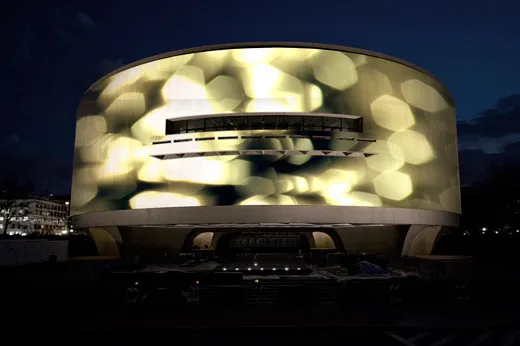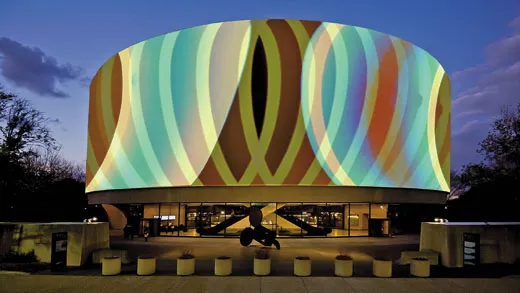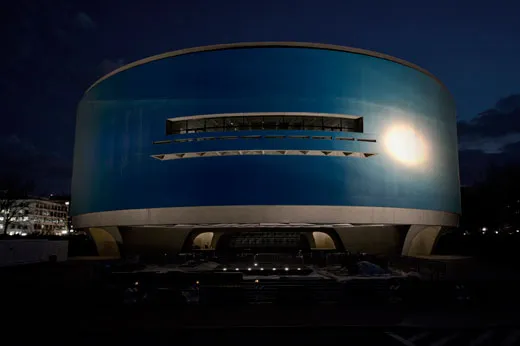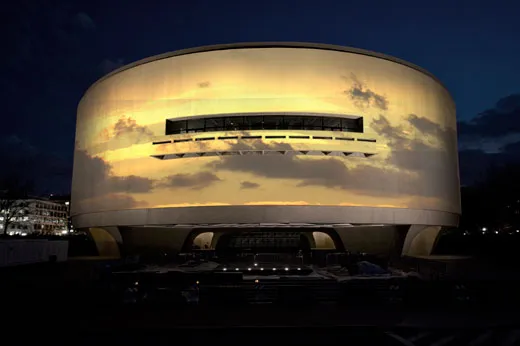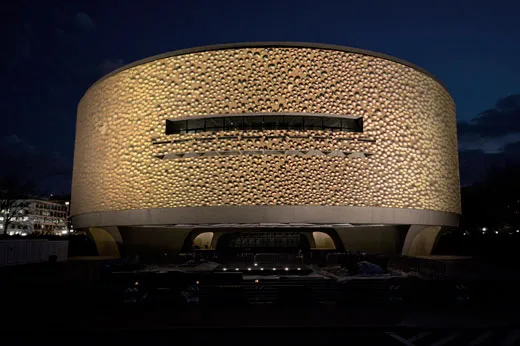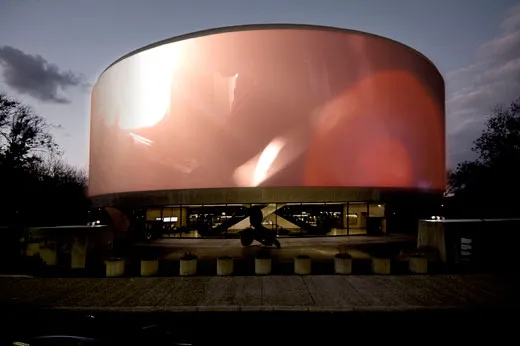Turning the Hirshhorn Into the Ultimate Movie Screen
Artist Doug Aitken’s “SONG1” will transform the Smithsonian art museum, projecting a series of fantastic moving images onto its concrete exterior
Doug Aitken first visited the Hirshhorn Museum two years ago, at dusk. “I arrived in a taxi,” the artist remembers. “I opened the door. I’d seen the Hirshhorn from afar, but when I saw it up close I had this very immediate reaction.” Looking up, he contemplated the building, “this concrete cylinder four or five stories high. It has this incredible mass, this incredible weight. I felt that something should happen here”—and already he had an idea of what.
“He immediately felt this was the ultimate cinema screen,” says Kerry Brougher, the Hirshhorn curator who’d invited Aitken, long renowned for his video installations. “To be honest with you, I had a feeling that’s what he’d think.”
Aitken is now transforming the museum into a 360-degree projection screen for SONG 1, a work the Hirshhorn calls its “boldest commission” and “one of the most groundbreaking exhibitions in its history.” Every night from March 22 through May 13, the building’s exterior will be bathed in moving images, courtesy of digital editing technology and 11 projectors ringing the grounds.
The project features a Tilda Swinton cameo and a performance by Beck, but the building’s circular facade is the real star.
“It’s a radically different canvas, an amazing liberation,” Aitken says. “When you look at the history of the moving image, it’s almost entirely contained within a rectangle.”
It’s a landmark moment for museums, too, says Brougher: “It is not just about the revered spaces on the inside, with the sacred objects, but a life on the outside of the building as well.”
The New York Times has called Aitken, 44, a “darling of the international art world”; his projects span media and blend genres, and he’s forged sculpture out of everything from FedEx boxes to motorized mirrors to speakers used as sonic weapons during the Persian Gulf War. But ever since his installation electric earth won the International Prize at the Venice Biennale in 1999, he’s been best known for his films. A Los Angeles-area native, Aitken sees film as an artist’s tool like any other. His video installations include Hollywood flourishes (such as appearances by Swinton, Chloë Sevigny and Donald Sutherland) even as they eschew linear storytelling and the traditional single-screen perspective. An Aitken piece might follow fracturing ice floes, dissect Midwestern auctioneers’ singsong pitches or explore the pathos of modern travel through unsettling footage of migratory birds and other wild animals ensconced in hotel rooms. He splices together seemingly disconnected scenes, using multiple projection surfaces in separate rooms—or, sometimes, on the sides of buildings.
He has transformed museums before. In 1998, he beamed a pair of eyes onto the Vienna Secession Building. In 2001, his multi-part video installation new ocean filled London’s Serpentine Gallery from basement to cupola. In 2007, the outdoor show sleepwalkers simultaneously covered the Museum of Modern Art and the American Folk Art Museum in New York. But SONG 1 is a different undertaking, he says, both because of the unique screen shape and the unprecedented role of music.
The work revolves around the classic 1934 pop song “I Only Have Eyes for You.” Beck and other artists perform ragtime, gospel, doo-wop and high-speed percussion versions. The music evolves with each playing, sometimes resembling a torch song, or a country standard, or raw electronica. Its rhythms shape the images streaming across the Hirshhorn, from highway traffic patterns to the movements of clouds. “We’re looking for ways to create a kind of choreography,” Aitken says. “It’s not about projection. It’s about bringing architecture to life and making it move.”
The piece will play from after dark to midnight. The effect will change with the season, as the days grow longer and the trees bud. Not coincidentally, the show spans cherry-blossom season, when many tourists will visit the Hirshhorn for the first time, perhaps at dusk, as Aitken did. And now something will definitely be happening.
